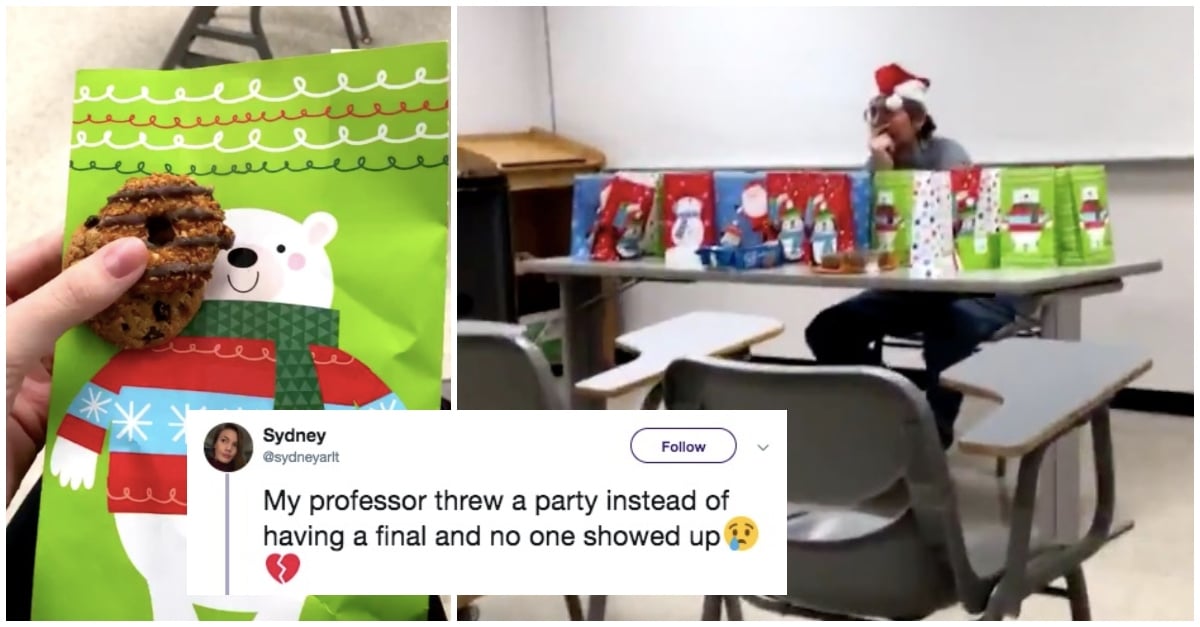
Last Wednesday, college student Sydney Arlt posted a video on Twitter of one of her professors holding a party for students that no one attended. There's a good chance you've seen the video — it's been viewed 7.8 million times.
But the thing is, it's not real.
Sydney and five of her classmates created the video as part of an assignment for their class at Missouri State University. Their professor, Andrew Cline, asked students to intentionally create a post that would go viral. He didn't expect any of his students to actually succeed.
The project was "designed to be failed," Andrew told BuzzFeed News.
"Viral-ness is the idea of making something that draws an immediate mass audience, and if you can do that on purpose, you’re going to be a rich person," he'd told his class. "It's very difficult to do."
"I thought the assignment was pretty impossible at first," Sydney admitted.
But then, her project group came up with a golden idea, modeled after other viral videos. They decided to pretend that their professor had thrown a party that no one showed up for.
The fake viral video shows Andrew looking disappointed in front of a mostly empty classroom. It now has over 340,000 likes. Guess Sydney and her classmates will be rich soon!

Last week, Sydney Arlt posted a video on Twitter with the caption: "My professor threw a party instead of having a final and no one showed up ."
The video starts with Sydney's hand holding cookies and a Christmas-themed gift bag, then pans to a view of the classroom with only a few students sitting in it.
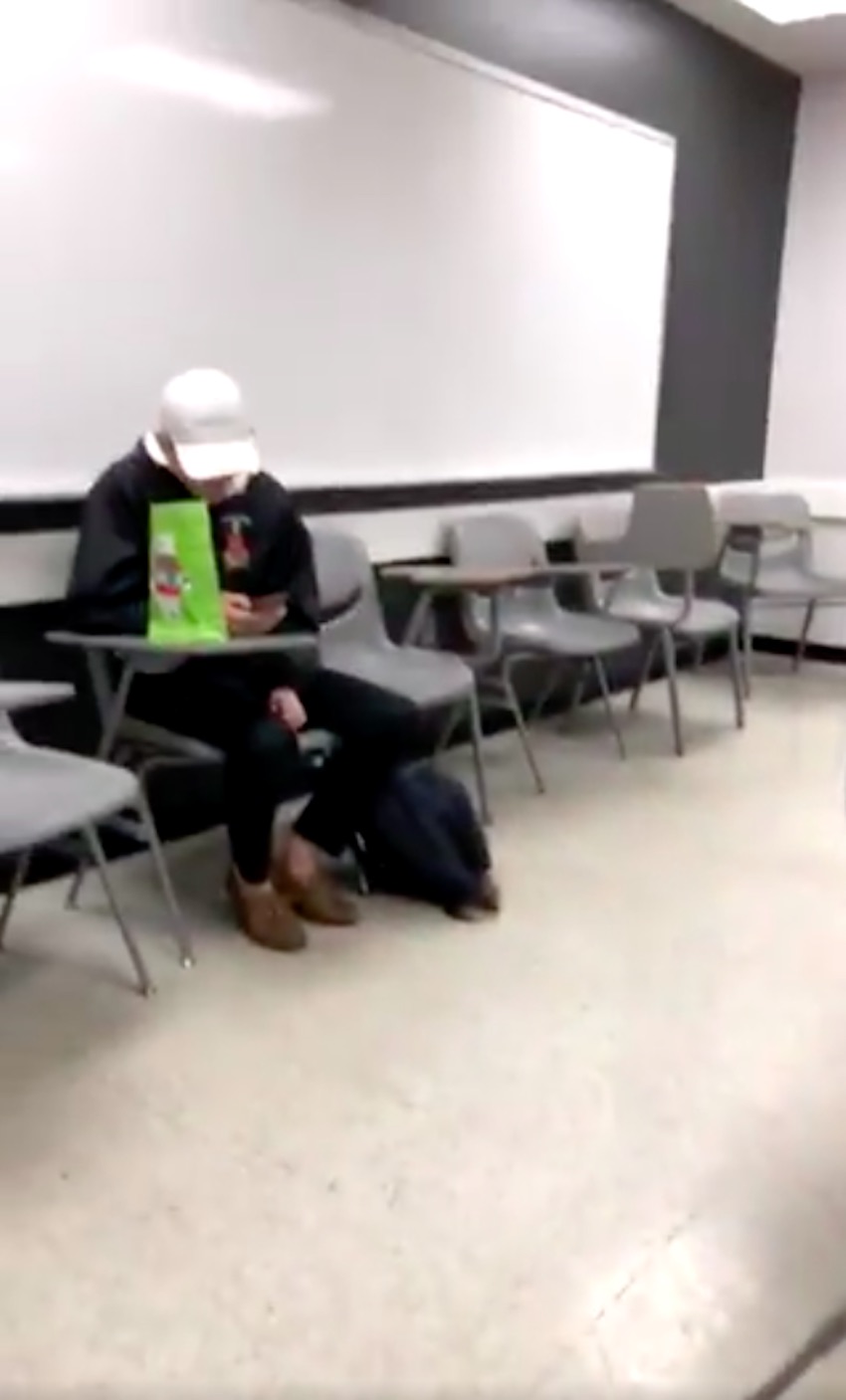
Then it cuts to Sydney's professor, Andrew Cline, sitting at his desk and looking pretty dang disappointed.
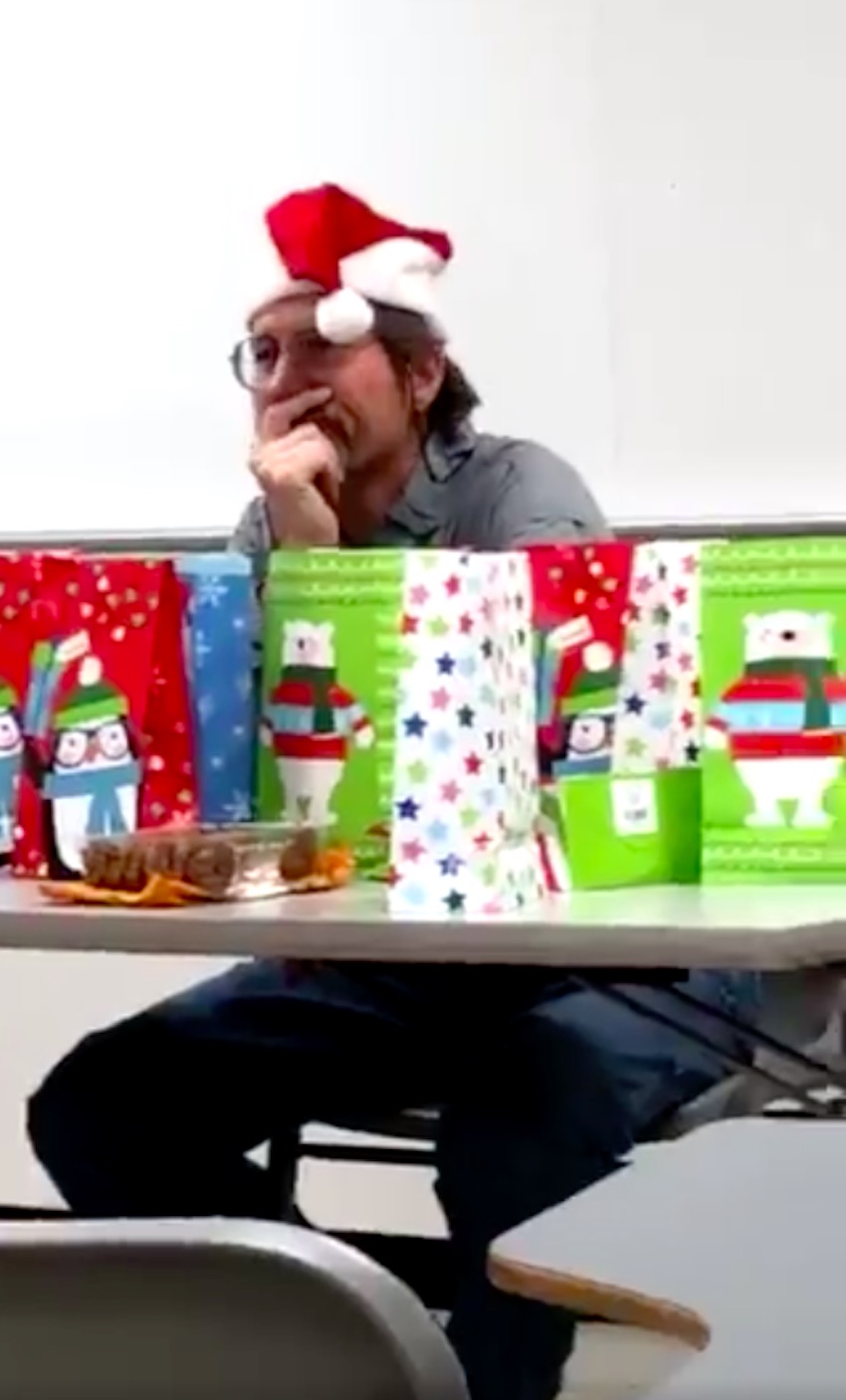
The video is only 10 seconds long, but it really touched people's hearts. It went massively viral and has now been retweeted over 70,000 times.
But as popular as Sydney's video has become, it's not actually real. At all.
It was created for an assignment from Sydney's class, the Fundamentals of Media Convergence, at Missouri State University.

Professor Andrew Cline said he didn't expect anyone to actually succeed at creating a viral video. His intention was to teach students a lesson about how hard it is to purposefully go viral.
"Viral-ness is the idea of making something that draws an immediate mass audience, and if you can do that on purpose, you’re going to be a rich person," Andrew said he told his class, per BuzzFeed News.

Andrew asked students to make a post that reached 1 million views, a goal that no one else has ever reached. But Sydney's group far surpassed that. Their video of Andrew's party reached 7.8 million views after just a week.
Sydney and her project group modeled their fake video after the Sad Papaw tweet that went viral in 2016. That tweet — which was actually real — was about a grandpa who was disappointed when only one of his six grandkids showed up to eat burgers at his house.

A similar image, also real, went viral in October, when a kindergarten student invited 32 classmates to his pizza party and no one showed up.

Sydney and her classmates sensed a trend: Parties-gone-wrong are guaranteed to strike a chord with folks.

It worked. People were seriously heartbroken for Andrew.

And they were impressed at his effort for his students.
(To Andrew's absolute shock, no one seemed to question why a professor would throw a party instead of having a final exam.)

One Twitter user half-seriously offered to mail him a Christmas card.

Others jokingly offered to go all the way to Missouri for the party. Many people even reached out to Andrew personally to comfort him.
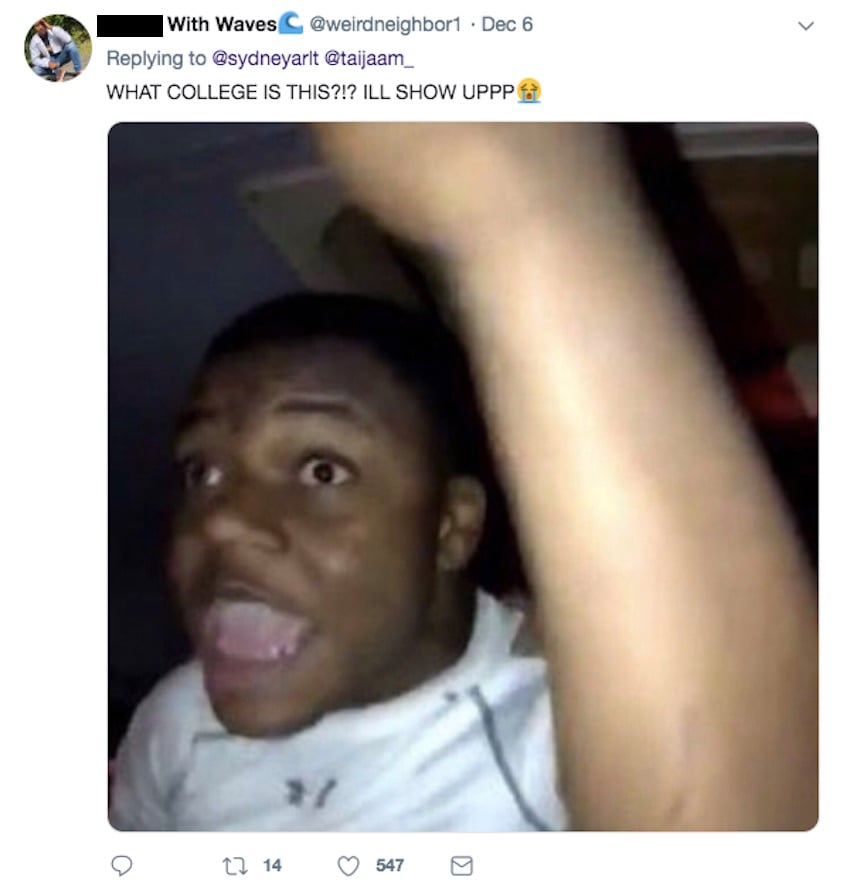
Eventually, Missouri State University's official social media account actually retweeted the video themselves, at which point Andrew stepped in to set the record straight.
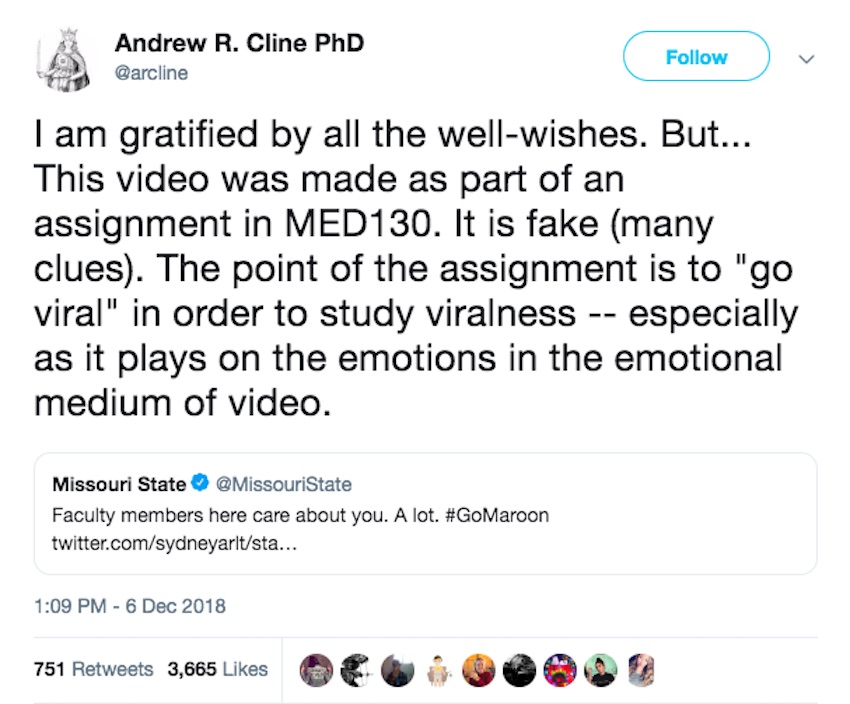
So what did Sydney learn from the assignment?
"People are really easy to manipulate," she said.
Andrew, on the other hand, has learned just how seriously people take random tweets from strangers on the internet.
"As a nation, we need to wise up," he said.
He did, however, give the group an A on the project.




